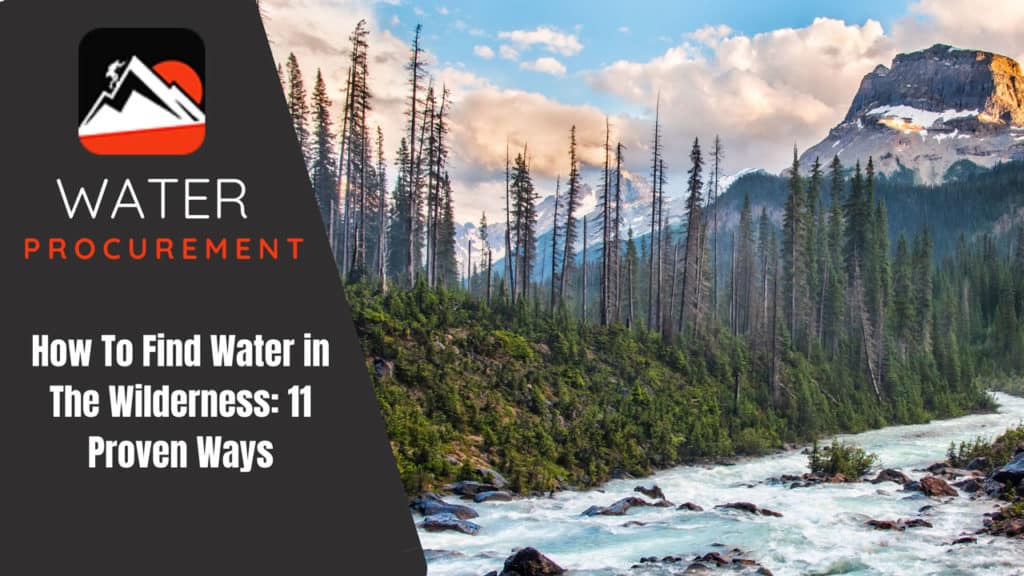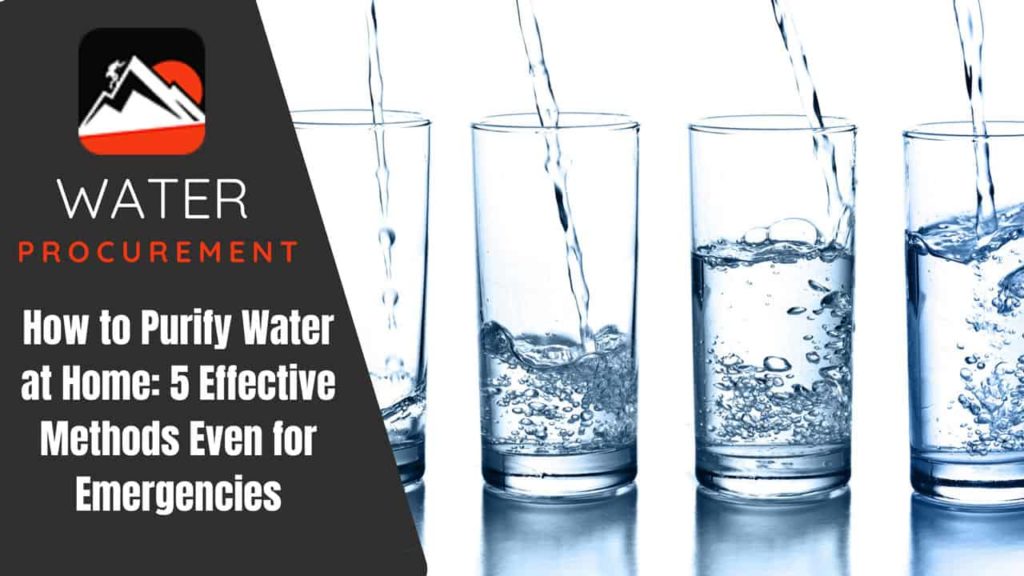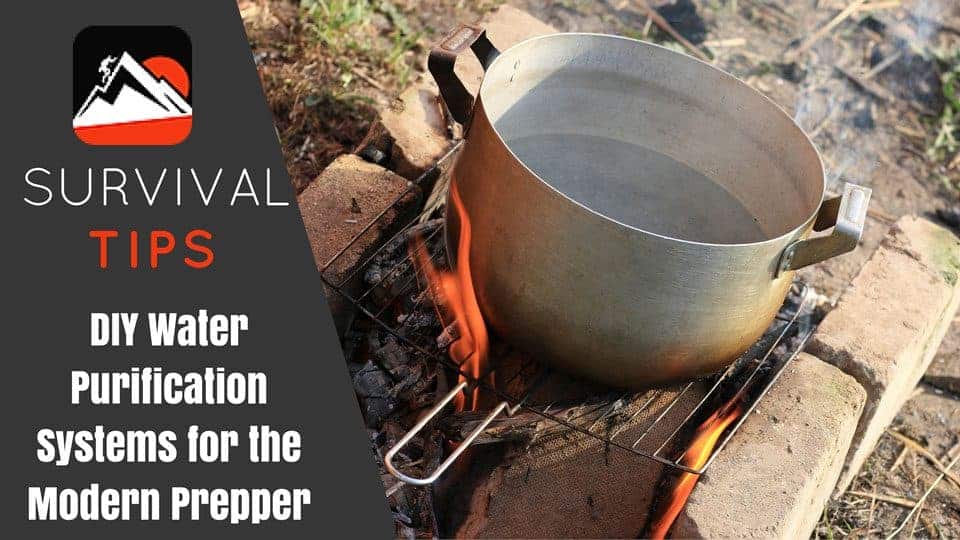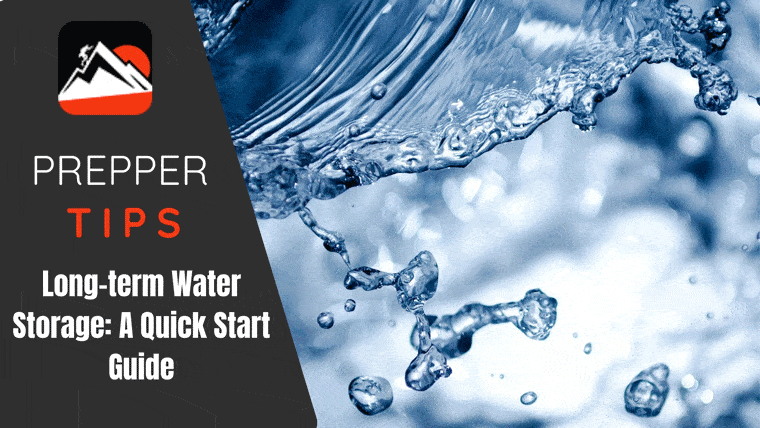Contents
One of your top priorities is staying hydrated when you’re lost in the wilderness, but getting the water you need can be surprisingly challenging. There are plenty of tips and tricks you can use to collect drinking water when you’re far from civilization or help, and many of them will be familiar to anyone who has read Robinson Crusoe or watched Cast Away. And luckily, there are now a number of ways to do this that are proven and reliable. This blog post will discuss 10 different methods you can use to find water in the great outdoors. So whether you’re lost in the middle of nowhere or just camping with your buddies, keep reading for some tips on how to stay hydrated!
Why Water Should Be Your Top Priority To Survive In The Wilderness?
Water is essential for survival and should be your top priority when stranded in the wilderness. The human body is approximately 60% water, and every cell, tissue, and organ needs water to function properly. Even a small loss of body water can lead to dehydration, which can impair cognitive function, and physical performance and eventually lead to death.
Humans can lose up to 2.4 liters (about 8 cups) of water per hour in hot environments through sweating alone. And while we can survive without food for weeks, we can only live without water for a few days. So if you find yourself in a situation where you’re lost in the wilderness without any water, it’s important to know how to find it quickly.
What Water Sources Should Be Avoided?
There are many water sources in the wilderness, but not all of them are safe to drink from. Avoid any water that looks murky or stagnant, as this could be a sign of bacteria or other contaminants. You should also avoid any water that has an unpleasant taste or smell, as this could also be a sign of contamination. If you’re unsure whether or not a water source is safe to drink from, it’s always best to err on the side of caution and find another source.
You might also find interesting our article about water desalination for survival.
How To Filter Water In The Wild?
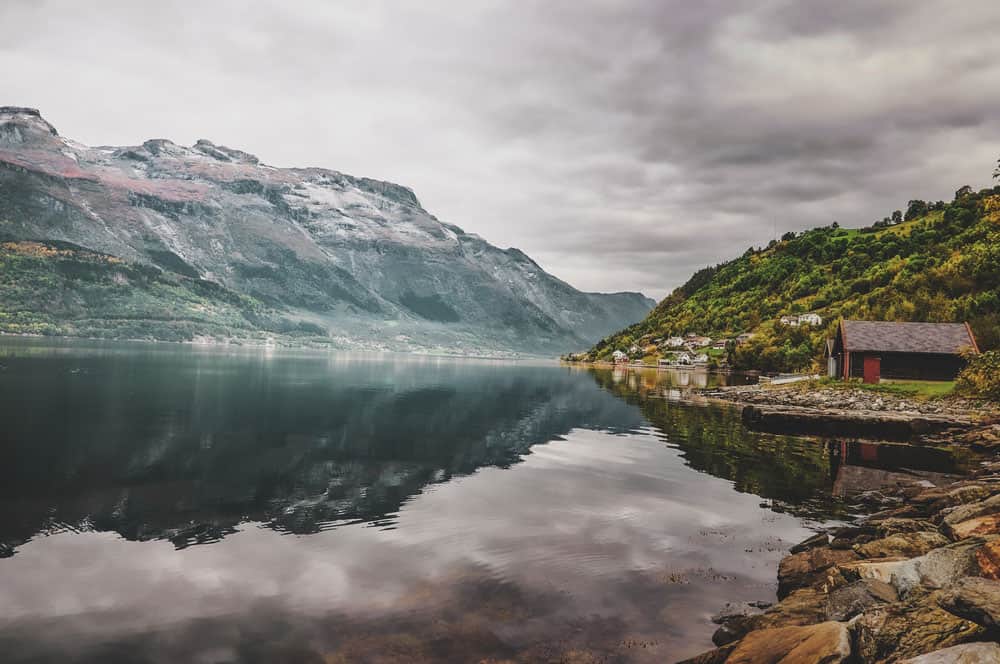
Once you’ve found a water source, it’s important to filter the water before drinking it. This will remove any contaminants that may be present and make the water safe to drink. Here are a few ways to filter water in the wilderness:
1) Boiling It:
Boiling is one of the most effective ways to filter water, as it will kill any bacteria or other contaminants that may be present. Simply bring the water to a rolling boil for at least 1 minute, and let it cool before drinking.
2) Filtering It With A Cloth:
If you don’t have a way to boil water, you can filter it using a clean cloth. Simply drape the cloth over the top of a container, and pour the water through it. The cloth will trap any contaminants present in the water, making it safe to drink.
3) Using The Sun To Kill Bacteria:
If you’re in a sunny environment, you can use the sun’s power to kill any bacteria present in the water. Simply fill a clear container with water, and place it in direct sunlight for 6 hours. The UV rays from the sun will kill any bacteria present, making the water safe to drink.
We also recommend reading our article about how to get water from trees.
Some Gear That You Should Carry To Filter Water:
1) Lifestraw, Sawyer, Or Similar Filters:
These filters are designed to remove bacteria, parasites, and other contaminants from water, making it safe to drink.
2) Water Purification Tablets:
These tablets are a quick and easy way to purify water, and they’re great for emergency situations. Simply drop one tablet into a liter of water, and wait 30 minutes for it to dissolve.
3) A Metallic Vessel Like a Canteen:
A canteen or similar vessel can be used to collect water from various sources and can also be used to boil water if necessary.
4) A Fire Starter To Boil Water:
If you don’t have a way to boil water, you can use a fire starter to create a small fire. This will allow you to boil water and purify it, making it safe to drink.
Tips To Find Good Water Sources:
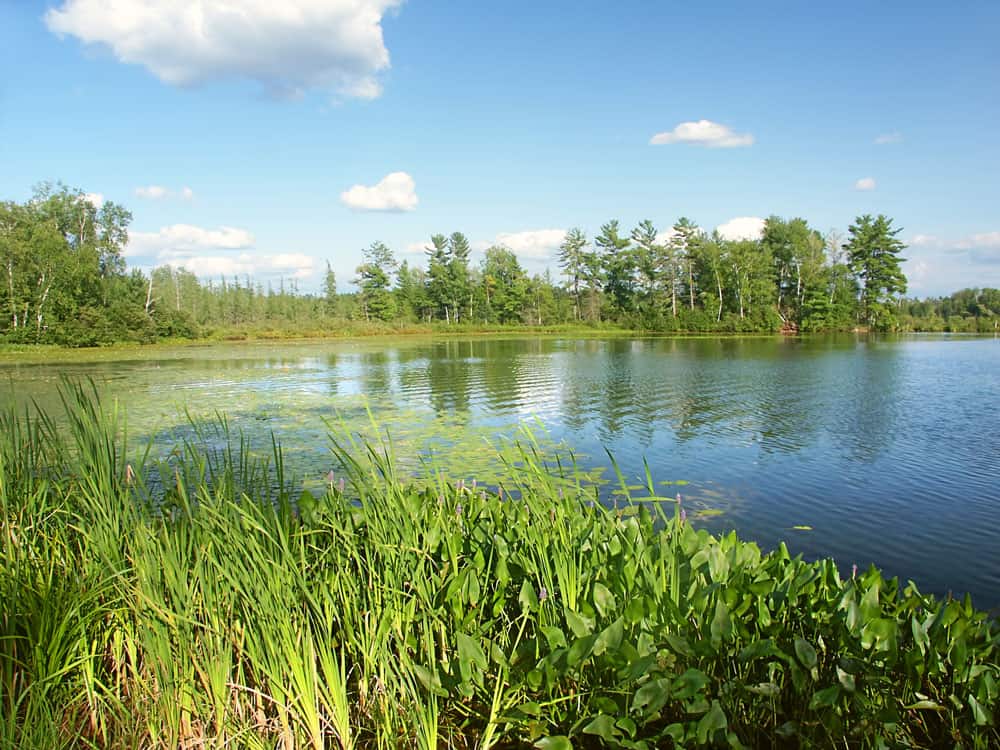
1) Nature Indicators:
Look for nature indicators that will help you find water sources. These include things like green plants, clouds, and streams of water.
Look For Vegetation:
One of the easiest ways to find water is to look for vegetation. Green plants and trees are a good indicator of nearby water sources, as they need water to survive. Look for depressions in the ground:
Look At The Clouds:
Another way to find water is to look at the clouds. If you see a cloud that’s lower than the others, it’s likely because it’s being pulled down by the weight of the water vapor it contains. This can be a good indicator of nearby water sources.
Try To Hear The Sounds Of Streams Of Water Like Rivers And Streams:
If you’re in an area with lots of trees and vegetation, it can be difficult to hear the sounds of running water. But if you stop and listen carefully, you may be able to hear the faint sound of a stream or river nearby.
2) Wild Life Indicators:
Another way to find water is to look for signs of wildlife. Animals need water to survive, so they’re often a good indicator of nearby water sources. Look for animal tracks:
Follow Animal Tracks:
If you see animal tracks leading into an area, there’s a good chance there’s water nearby. Animals will often travel long distances to find water, so following their tracks can lead you to a water source.
Look For Birds:
Birds are another good indicator of water sources. Birds need water to drink and bathe, so they’re often found near water sources. If you see a group of birds flying or perching in an area, there’s a good chance there’s water nearby.
Follow Insects:
Insects are attracted to water, so they’re often a good indicator of nearby water sources. If you see a group of insects flying or crawling in an area, there’s a good chance there’s water nearby.
Top 11 Ways To Collect Water In The Wild:
If you’re planning on spending time in a natural environment, it can be beneficial to be prepared and have a plan for collecting water in case you run into a situation where water is scarce. Water is an important survival resource; without it, your body will not be able to function. While you might not need these tips now, knowing how and when to collect water can make all of the difference during an emergency situation or if you find yourself lost somewhere remote. Here are the top 11 proven ways to collect water in the wild:
1) Lakes, Ponds, Rivers, Streams:
The most obvious choice for collecting water is finding an available body of water. This could be in the form of a lake, pond, river, or stream. If you have a water bottle or container, you can simply fill it up and drink from it. If you don’t have a container, you can cup your hands together and drink from them.
2) Puddles:
Another option for collecting water is to look for puddles. Puddles are often found after it rains or in low-lying areas where water has pooled. Puddles can be a good water source, but they can also contain contaminants, so it’s important to purify the water before drinking it.
3) Rainwater:
If it’s raining, you can collect rainwater to drink. Rainwater is generally safe to drink, but it can be contaminated by pollutants if it falls on contaminated surfaces like roofs or roads. It’s best to collect rainwater in a clean container and then purify it before drinking.
4) Morning Dew:
Another option for collecting water is to collect morning dew. Dew is often found on grass, leaves, and other surfaces in the morning. You can collect dew by tying a cloth or piece of clothing to a branch and then wringing it out into a container.
5) Fruits and Vegetation:
Some fruits and vegetables contain water that you can drink. Cucumbers, tomatoes, watermelons, and grapes are all good water sources. You can also get water from plants like cacti and aloe vera.
6) Plant Transpiration:
Plants release water vapor through a process called transpiration. You can collect this water by wrapping a plastic bag around a leafy branch and then tie the bag closed. The water will condense on the inside of the bag, and you can then drink it.
7) Rock Crevices and Tree Crotches:
Another option for collecting water is to look for rock crevices or tree crotches. These are often found in areas where there is no vegetation. Water can collect in these areas, and you can drink it by cupping your hands or using a container.
8) Solar Still:
A solar still is a device that you can use to collect water from the environment. Solar stills work by using the sun’s heat to evaporate water, condensing on a plastic sheet, and drip into a container.
9) Desert Specific Ways To Find Water:
If you find yourself in a desert, there are a few specific ways to collect water.
Collect Condensation From Metal:
You can collect water by placing a metal container in the sun. The heat from the sun will cause water to condense on the inside of the container, and you can then drink it.
Dig A Well:
Another option for collecting water in a desert is to dig a well. You can do this by digging a hole in the ground and then lining it with a plastic sheet. The water will seep into the hole, and you can then collect it.
Cacti:
Some cacti contain water that you can drink. You can cut open the cactus and then collect the water from inside.
10) Tropical Specific Ways To Find Water:
If you find yourself in a tropical area, there is one specific way to collect water.
Dig A Beach Well:
You can dig a well on the beach by digging a hole in the sand and then lining it with a plastic sheet. The water will seep into the hole, and you can then collect it.
11) Cold Weather-Specific Ways To Find Water:
If you find yourself in a cold-weather area, there are a few specific ways to collect water.
Sea Ice:
As long as you’re near a coastline, sea ice can be a great source of water. While it’s not necessarily safe to drink straight from an iceberg, melting sea ice is often perfectly clean and safe for drinking. Just be sure that you melt it completely before drinking; if you don’t, you could end up with a mouthful of saltwater. Also, remember that icebergs may look like they’re stationary but are actually floating on ocean currents.
Melting Snow:
If you’re stranded somewhere cold, you can collect water by melting snow. You’ll need a way to heat up your water (like a fire or another source of heat), but if you have that, melting snow is an easy way to get clean drinking water. Just be sure that you don’t melt it directly on a fire; doing so could potentially contaminate your water with ash and other chemicals.
FAQ
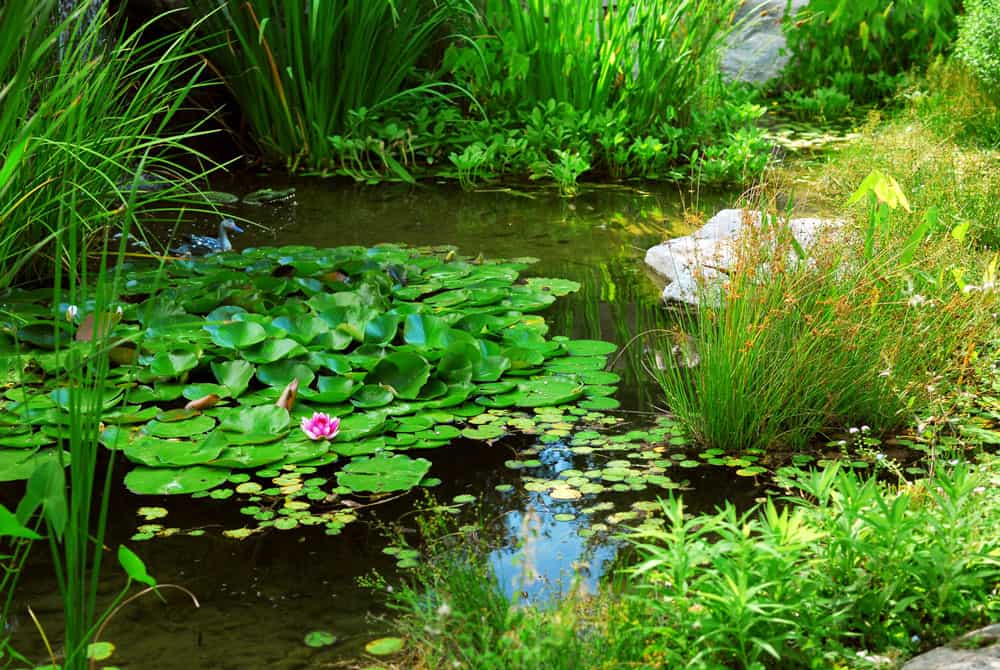
How Do I Find A River In The Forest?
The best way to find a river in the forest is to look for signs of running water, such as wet ground, moss growing on trees, or insects. You can also listen to the sound of running water. Once you find a river, you can follow it upstream to find its source.
Can I Drink Water From A River?
It is generally safe to drink water from a river, but you should always purify it first by boiling it, filtering it, or using iodine tablets. However, if the water is murky or has a strong odor, then it’s best to avoid drinking it.
Is Rain Water Drinkable?
Yes, rainwater is perfectly safe to drink. However, you should always collect it in a clean container so that it doesn’t become contaminated.
Is Water From A Natural Spring Safe To Drink?
Yes, water from a natural spring is usually safe to drink. However, you should always check with the local authorities to make sure that the water is safe before drinking it.
Can You Find Water With A Stick?
Yes, if you know where to look. Dig down about 6 inches into damp soil and look for green moss or grass growing around your stick. The moisture from these plants will seep into your stick, indicating where water is nearby. This method works best when there’s not much sunlight because it requires shade to see these indicators. If no moss or grass is growing near your stick, try digging deeper until you reach moist soil, this means that water is likely to close by.
Conclusion
You now have ten different ways that you can find water in the wilderness. While some of these methods are more reliable than others, it is important to be prepared with multiple strategies for finding water so that you will never be without this vital resource. Remember to drink enough water when hiking or camping, and stay safe while exploring the great outdoors.

